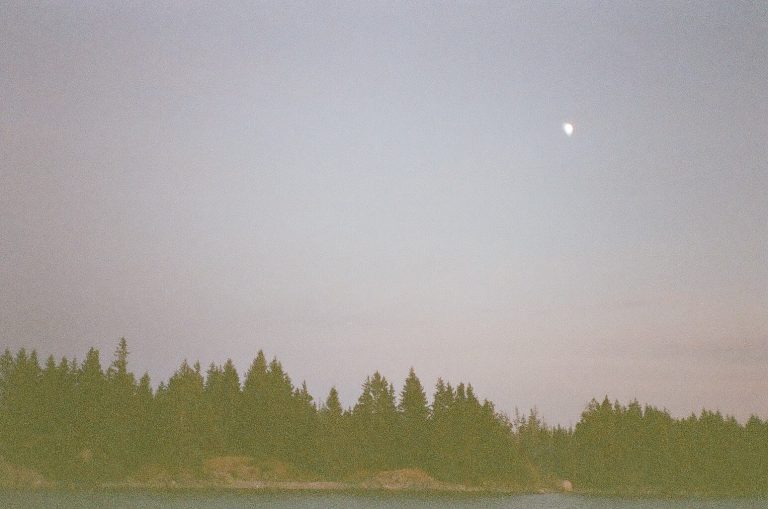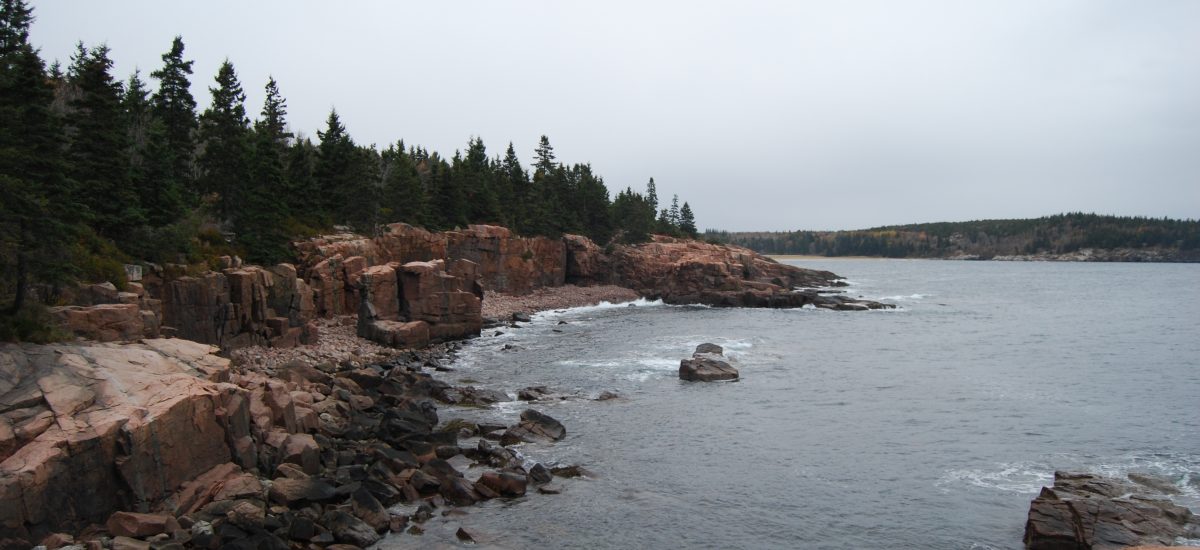Guided Meditation- Halophytes

This is a guided meditation that I created as a final project for a class called Morphology of Plants on Mount Desert Island, a class I took at College of the Atlantic in Maine (2014). During the presentation, I turned the lights down and asked my peers to close their eyes as they listened to me read.
I originally came up with this idea when I was trying to create an environment that would be least stressful for me, the presenter. However, what I didn’t realize is that it also relieved pressure and stress from the audience as well. When presenting this piece, I noticed the tension in the room recede. After the presentation, the class provided feedback and the consensus was that this presentation was not only effective at introducing information, but also relieving the stress of finals, if just for a few minutes.
The major take-away for me after presenting this project is that thinking creatively about the way information is presented can be both a process of reflection for the individual (in my case, not liking public speaking) and a process of exploration for the audience.
if you would like to listen as you follow along with the text
or close your eyes and just listen,
click below…
- Part 1- Salt Marsh
- Part 2- Beach
audio recordings credit: All Rights Reserved, Amanda Burns 2019.
As you take your first step, you become fully aware of the ground beneath your feet.
Your second step brings awareness to the sounds around you, the call of an egret and the slosh of your shoes with each step further away from the trail.
Your third step takes you to your final destination, a salt marsh in Maine.
As you look around, you see trails of water through the landscape of grass. Although it doesn’t look like it, this is salt water. Somehow, the ocean is here, but it is hiding under all of the tall grass. There are two different types of grass surrounding you, which seem to be thriving despite the hidden ocean water beneath.
You trudge through the grass to find a perfect specimen. This cord grass is smooth and tall, with a light brownish, almost cream colored stalk. On the top of each plant, the leaves are split into bunches, creating a sparse fan or rosette of tall stiff leaves.
Looking around, you notice another type of plant further on into the marsh. This plant is called salt-meadow hay. The stalks are flexible and thin, meaning that with every burst of wind, you see the stalks pushed in another direction, creating swirls all over the marsh. It is extra windy, and it almost knocks you over.
You grab a bunch of salt-meadow hay to keep from falling into the water, but you accidentally pull some of the roots out of the sediment. Immediately you notice the difference in the physical nature of the root compared to other plants that are not as salt-tolerant. This root actually has a layer of salt-resistant cells, which prevent large amounts of salt from entering the plant through the root system.
While studying the roots, you remember the reason you came to this place. You were searching for a plant called glasswort.
Going back the way you came, zigzagging through the cord grass and salt-meadow hay, you stop at the edge of the marsh, finding a glasswort plant quite easily. These plants are bright green and have segmented parts. The plant feels almost like flesh, which is an adaptation of this type of plant that makes it tolerant to the salt water here.
As you ponder this, you notice the shadows of grass all around you. Realizing that it is getting late and the sun will disappear soon, you hesitantly walk back home.

photo credit: “Salt Marsh” All Rights Reserved, Amanda Burns 2014
As you take your first step, imagine the leaves crunching under your feet.
Your second step will lead you to the edge of the forest.
Your third step is on hard rock.
You look down, wondering where you are and what is in front of you. As you lift your head, a light salty mist settles on your eyelashes and skin. You look up and see the grey of fog over the ocean. There is a fisherman’s boat floating off in the distance, and the seagulls call, hoping for a bite to eat.
You have come here to explore.
The first plant that catches your eye is a small shrub, growing at the edge of the forest. This plant reminds you of an herb that you have seen before in your parents spice cabinet when you were a child. You remember it being called a bay leaf and having a very strong smell. Reaching out to touch the leaves, your fingers brush past some small waxy, blue-gray berries. Curious as to what the plant is, you collect a few of these berries in your hand and study their texture.
The waxy covering on the berries finally allows you to place this shrub. It is a bay berry and is sometimes used to make candles. As you drop the berries and stand up, you realize that the location of this shrub seems quite lacking in nutrients, and you wonder how it seems to be doing so well here. It is a small shrub, in size, but there are many berries, which is a sign that the plant is in good health. Thinking back about the waxy coating on the berries and leaves that you just discovered leads you to ponder whether this waxy coating could help with water retention.
Slowly you tear yourself away from the bay berry shrub and almost immediately find yourself standing over another plant, this one much more odd-looking. This plant has a cone or rocket-shaped seedpod, almost like a fruit, on top. Bending down to get a closer look, you notice the succulence and intricate toothing on the leaves. This plant, called an American Sea rocket, seems to behave more like a colony or group of plants, as opposed to a stand-alone shrub or individual plant. Tracking the roots and shoots all around, you determine that what looks like multiple plants are actually all share one main root system. While following the plant-system, you begin to stumble on the loose sediment and rock cracks. You wonder how strong and deep the root system of this plant must have to be in order to keep the plant grounded and attached to the ground. While considering this, you decide to walk on, being extra careful to walk slowly and deliberately so as not to trip.
You walk along the rocks, toward the ocean. When you get to a more gravelly area of the beach, you decide to take a break.
Sitting down slowly, you notice a little green plant right where you were going to sit. You wonder how it got there and how it is growing amidst the tiny gravel. The leaves look familiar to you and it doesn’t take long for you to realize that this is a beach pea. The little plant was close to the ground, and had very purple, flowers with large glaucous, almost succulent leaves. The terminal points of most leaves have tiny twisting tendrils, to allow for expansion. You see these small vine-like twists wrapped around small rocks and twisting into the ground, which you assume is for stability.
Burrowing your hands into the rocks, like the beach pea tendrils, you move over a couple of feet to sit, being careful to not bother any other plants. While enjoying the ocean-spray, just as these plants do, you can finally sit and reflect on all of the different salt-loving plants, or halophytes, that you saw and observed.

photo credit: “Thunder Hole, Maine” All Rights Reserved, Amanda Burns 2014
